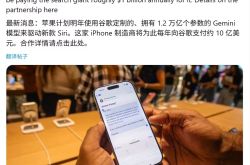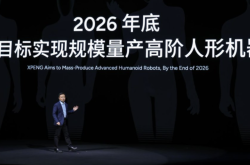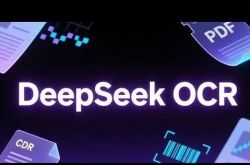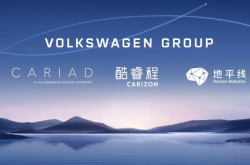"Crazy" Autonomous Driving: Can China Lead the Future? Can "Native Radishes" Outpace "Foreign Radishes"?
![]() 01/23 2025
01/23 2025
![]() 401
401
Introduction
In this era of rapid technological evolution, every technological revolution stirs up a mix of enthusiasm and skepticism.
At the 2025 CES in the United States, NVIDIA founder Jen-Hsun Huang's proclamation that "the era of autonomous driving has arrived" served as the green light for this prolonged race.
Meanwhile, across the Pacific in China, the "crazy" pace of progress on this front has astonished even Jen-Hsun Huang, who exclaimed:
"Chinese technology is truly amazing!"
Join us as we delve into this with Unmanned Cars Coming (WeChat official account: Unmanned Cars Coming)!
(For further reading, please click: "The US Strikes Again! A Comprehensive Ban on Chinese Autonomous Vehicles, What's Behind It?")

I. Autonomous Driving: The "Golden Key" to the Next Generation of AI
At the convergence of technological transformation and national strategy, autonomous driving has transcended mere automotive technology; it holds the key to unlocking the next generation of artificial intelligence.
A car is more than just a mode of transportation; it's a mobile data hub and a sentient being capable of perception and decision-making.
Daily, billions of data points stream from these intelligent "eyes," nurturing AI's deep learning networks and pushing the boundaries of technology ever outward.
Morningside Ventures' Liu Qin's assertion that "smart cars are the first 'killer' application of the AI era" is well-founded.
Under the glare of CES, we witnessed AI's grand migration from the cloud to the edge, with smart cars shining brightest in this transition.
Conversely, while embodied robots also carry the dream of AI, technical challenges and user acceptance hurdles make it difficult for them to keep pace with smart cars in the near term.
II. Native Radishes vs. Foreign Radishes: Who Will Lead the Future?
1. End-to-End Technology: Tesla's Inspiration and Chinese Automakers' Surpassing
While Tesla pioneered the end-to-end technology paradigm, Chinese automakers are undeniably at the forefront of popularizing high-level autonomous driving. Tesla's autonomous driving journey is akin to a foreign radish, leading the industry; Chinese automakers, however, are like native radishes, deeply rooted in the market and rapidly iterating.
Tesla's success stems from its robust data processing capabilities and algorithm optimization.
However, with a vast user base and diverse application scenarios, Chinese automakers are swiftly closing the gap with Tesla.
At CES, Geely's launch of the "Smart Car All-Domain AI" technology system marked a formidable counterstrike by Chinese automakers in autonomous driving.
2. Market Intensification: Autonomous Driving Becomes the "Lifesaver" for Automakers
Following Tesla's price cut, a domino effect of price wars erupted, compressing industry profit margins.
In the first 11 months of 2024, China's automotive industry profit rate stood at a mere 4.4%, far below the average for downstream industrial enterprises. Against this backdrop, high-level autonomous driving has emerged as a lifeline for automakers.
New players like XPeng and Li Auto have AI woven into their DNA, while traditional giants such as Geely and Changan have established technology companies, aiming to achieve a "transformation against fate" through intelligent evolution.
They recognize that the traditional path of manufacturing and selling cars is narrowing, and only by embracing intelligence and embracing the "technology" label can they navigate the turbulent seas of capital.
III. Demystifying End-to-End: Balancing Technology and Trust
Despite the fervent pursuit of end-to-end high-level autonomous driving, nuances abound.
Firstly, autonomous driving is still in its nascent stages, and the driving experience promoted by companies may fall short of reality.
Product PPTs may be rife with exaggerations, boasting of "veteran driver" capabilities and "global ease of driving," only to be followed by fine print disclaimers and limitations.
It's simply "idealistic but skeletal in practice!"
Moreover, end-to-end is not a one-size-fits-all solution for high-level autonomous driving; it harbors "inherent flaws" like poor interpretability and verifiability.
Pony.ai CTO Lou Tiancheng noted that training a general-purpose end-to-end model isn't difficult; it just requires hiring people and using public driving data.
This explains why many automakers have suddenly unveiled their self-developed end-to-end autonomous driving systems.
However, training a high-performance model demands significantly higher data quality, fostering the democratization of high-level autonomous driving, as more users mean more data and better model training.
Regarding user sentiment, the 2024 McKinsey China Automotive Consumer Insights report reveals that while consumer interest in automotive intelligence and autonomous driving functions is rising, their willingness and capacity to pay are declining.
A survey of nearly 30 friends found that most prefer enabling assisted driving on long highways and in traffic jams, hoping it aids in accident avoidance.
For the "City Pilot" function, over 80% said they daren't use it, perceiving the intelligent driving function as lacking reliability, efficiency, and a human touch.
Thus, for automakers to better iterate end-to-end large models, they must first address user trust.
Avoid empty slogans; start with scenarios users use most and face the greatest pain points, enhance the autonomous driving experience, and gradually build trust.
Don't just flaunt end-to-end and large models; truly superior technology must consider aspects like cost, efficiency, reliability, and user experience.
Daring to promise "collision compensation" for autonomous driving is the best testament to one's technology.
IV. Leading Automakers: The Ultimate Winners of the Autonomous Driving Race?
In this autonomous driving race, who will emerge victorious?
The author believes that compared to tech companies and new automotive manufacturing forces, leading automakers that have successfully transformed are more poised to shine.
Firstly, both autonomous driving and the next generation of AI technology are marathons.
Without substantial resources and a user base, crossing the finish line is impossible.
Leading automakers, with their traditional automotive manufacturing expertise and resources, are more likely to breakthrough in autonomous driving.
Secondly, smart cars aren't just about individual life and property safety; they're also deeply intertwined with localities and nations.
Against this backdrop, it's evident who holds more strength and is more trustworthy.
As industry leaders, leading automakers' brand influence and user trust surpass other enterprises.
Of course, tech companies and new automotive manufacturing forces also boast advantages like technological leadership and agile transformation. Handled wisely, they still have a chance to lead.
V. The Future of Autonomous Driving Belongs to "Native Radishes"
In this autonomous driving race, Chinese automakers are swiftly ascending with their unique "native radish" spirit.
Though foreign brands like Tesla remain formidable, Chinese automakers are gradually narrowing the gap thanks to their vast market, diverse application scenarios, and robust innovation capabilities.
In the future, the autonomous driving arena will be a competition not just of technology, but also of user experience, brand influence, and market strategy.
With their deep market foundation and relentless innovation spirit, Chinese automakers are poised to lead the future in this race.
In summary, Unmanned Cars Coming (WeChat official account: Unmanned Cars Coming) believes China has made remarkable strides in autonomous driving. For our "native radishes" to outperform "foreign radishes," they must leverage their strengths and address technology and trust-related challenges.
Let's anticipate the future of autonomous driving and see if the Chinese speed can work wonders!








